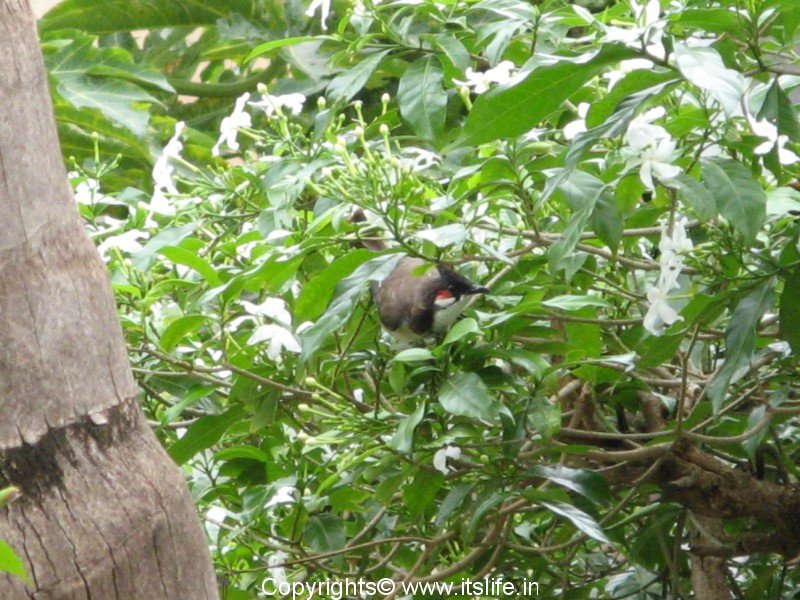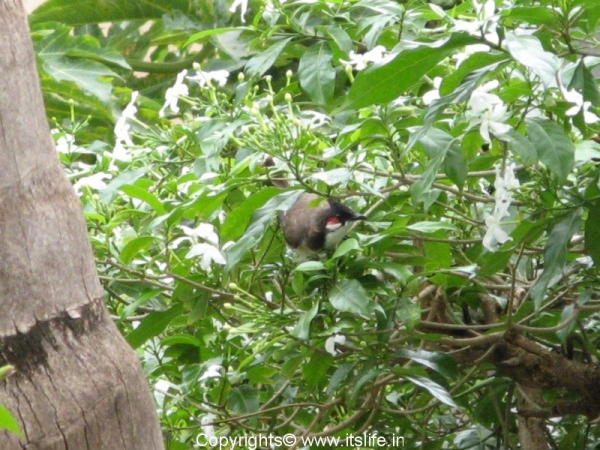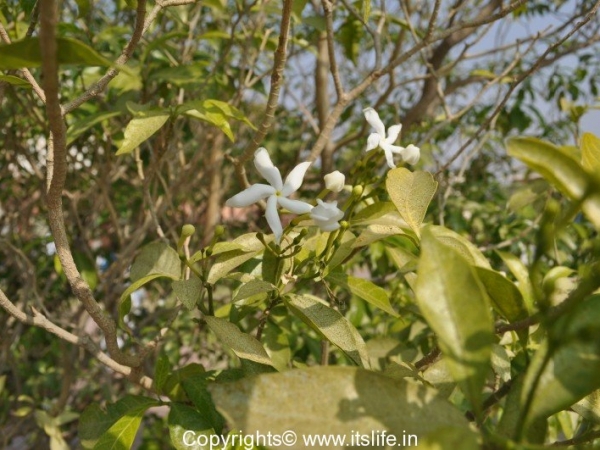I remember my grandmother preparing Kadige / Kajal / Eye liner using the petals of Nandi Battalu flower. She would say the continuous use of this Kadige would be good for the health of the eyes!!
Picture – Red Whiskered Bulbul on a Nandi Battalu plant
Plant Summary:
Nandi Battalu is the Kannada name of Crape Jasmine. The other English common names are Pin Wheel flower, Crape Gardenia, Moonbeam, Carnation of India. In Tamil it is known as Nandiar vattai, Gujarati “Sagar” and Marathi “Ananta or Tagar”. Crape Jasmine’s botanical name is Tabernaemontana divaricata native to India belonging to Apocynaceae family. Hindus use this flower to worship god.
It is an evergreen shrub and is cultivated as an ornamental plant for its fragrant white flowers. Crape Jasmine grows to a height of 8 to 15 feet with a spread of 6 feet or more. Pruning will help retain a particular shape of the plant. The leaves are waxy deep green with sheen and are about 3 to 6 inches long and 1 to 2 inches wide, ovate and pointed. The fruit is an orange-red pod.
The flowers bloom throughout the year. The flowers have 5 petals and are clustered on the stem tips. Another variety known as “Flore Pleno” has clusters of pure white, lacy double flowers and wavy, narrow leaves. ‘Grandifolia’ is a cultivar with larger leaves and double flowers.
Nandi Battalu flower is offered to Lord Ganesha during the 21 Pushpa Pooja while chanting the below mantra: “Om Avyaya Namaha, Kshirika Pushpam Samarpayami”.
Plant Propagation:
New plants can be grown from stem cuttings, which are chopped from partially mature wood in the growing season. It grows well in full sun or partial shade. Fertilize with an organic compound for fast growth. Crape Jasmine can be used as hedge or shrub border-screen or as background planting.
Plant Healing:
The plant is threatened by whiteflies, scales, caterpillars, nematodes, and sooty mold. Spray any organic pesticide to control the insects.




